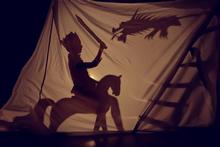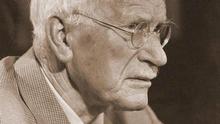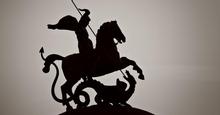Types of Leaders, Types of Knowledge
In 2018, the Center for Applications of Psychological Type (CAPT) collaborated with Merle Singer, a seasoned corporate leadership professional in Sydney, Australia, and Heather Round, a researcher and senior lecturer at Deakin University's Business School, Melbourne, on a Leadership Narratives study. Using the Pearson-Marr Archetype Indicator® instrument, a large mixed methods research study was conducted, exploring how a volatile world is changing the leadership narratives for seasoned female professionals and early-career female and male millennials in corporate Australia and the United States. In this Research series, we will discuss a number of insights and results from the Leadership Narratives study.
The Leadership Narratives study spanned two years (2018 - 2020), two countries (Australia and the United States), and three samples: senior executive women leaders, and younger women and men we labelled millennials. This was a mixed methods study, including statistical analyses of the PMAI® assessment aggregate results by country, gender, and age, and an in-depth thematic analysis of one hundred interviews. Additional participants outside the research interviews were people in intergenerational leadership development programs conducted by Merle and Heather in Australia.
In this first article, we present findings from analyses of mean archetype results in the entire sample that we think bring insight to leaders today. The study sample had 183 participants total across both countries, and female senior executives and millennial men and women. (AUS=134, USA=49; F=134, M=47; 2 respondents did not indicate gender).
There were no statistically significant differences in any of the twelve archetype means between countries, as a whole or within the female subsample. There were significant differences in archetype means between the CAPT database, which is predominantly American, and both the AUS and USA subsamples in the study. In the study, Seeker, Sage, Revolutionary, Caregiver, and Creator all had significantly lower archetype means in both the AUS and USA subsamples than the CAPT database. Idealist was significantly higher than the CAPT database in both the AUS and USA subsamples. This means that not only AUS participants differed from the CAPT database but the USA participants in the study differed from the CAPT database as well. It appears that the senior executive and millennial women Merle interviewed in the USA are qualitatively different than the people who purchase the PMAI assessment in CAPT's large database. This is an intriguing factor to follow up on in the future.
Insight #1: Types of Archetypal Knowledge Used by Leaders Today.
The top three archetypes for the entire sample by mean scores were Sage, Magician, and Realist. At first this did not make much sense to us, because these three archetypal characters do not have a lot in common with one another, nor are they the ones that we typically associate with leaders, i.e., Ruler. But, as we discussed a key finding from the interviews, an insight into these three top archetypes emerged for us.
An interview theme was the role of technology as an increasingly significant source of knowledge for leaders; we saw this as characteristic of leadership in the twenty-first century. How knowledge is generated, shared, and gained is unique to technology and being effective in leadership is more and more centered on knowledge, not just personal authority or influence. In this vein, what the Sage, Magician, and Realist all share is that they represent three distinct ways of gaining and using knowledge: the Sage through rational, logical data gathering and analyses; the Magician through intuitive means; and the Realist represents knowledge gained through practical experience and living.
Insight #2: Focus on Knowledge Rather than Systems.
The interview theme, of the role of technology and knowledge in twenty-first century leaders and these top three archetypes, informs the second insight from the lowest two archetypes in the sample: Ruler and Revolutionary. The Ruler and Revolutionary appear to oppose one another, where the Ruler maintains systems and the Revolutionary disrupts or dismantles systems. It is this focus on systems, and working at the system level as leaders, that we found telling in light of the theme the role of technology and knowledge have in leadership today. Specifically, we find that Ruler and Revolutionary, being the lowest archetypes, indicate a possible shift in focus of the leaders, in the study, from a system or organization level and traditional forms of power (Ruler most traditionally, but also Revolutionary in the disruption aspect of technology). Taken together, the three highest archetypes and the two lowest archetypes are a possible bellwether for shifting archetypal dynamics in leaders in the twenty-first century, as technology has taken a primary shaping role in how we conduct business, exercise leadership, and in almost every other aspect of our lives.
Finally, these mean results of the archetypes correlated with a topic that stood out in many of the interviews - that the more traditional patriarchal image of leaders is still strongly connected to concepts of leadership position, and yet none of the respondents spoke about aspiring to become one of these more heroic-style leaders. Study participants were more focused on being genuine and true to themselves, on leading with empathy and expecting their leaders to do likewise. And this wasn't gender based; across men and women what emerged was a softer style of leadership with more focus on soft skills and humanism.

























_thumb.png)
_thumb.png)


